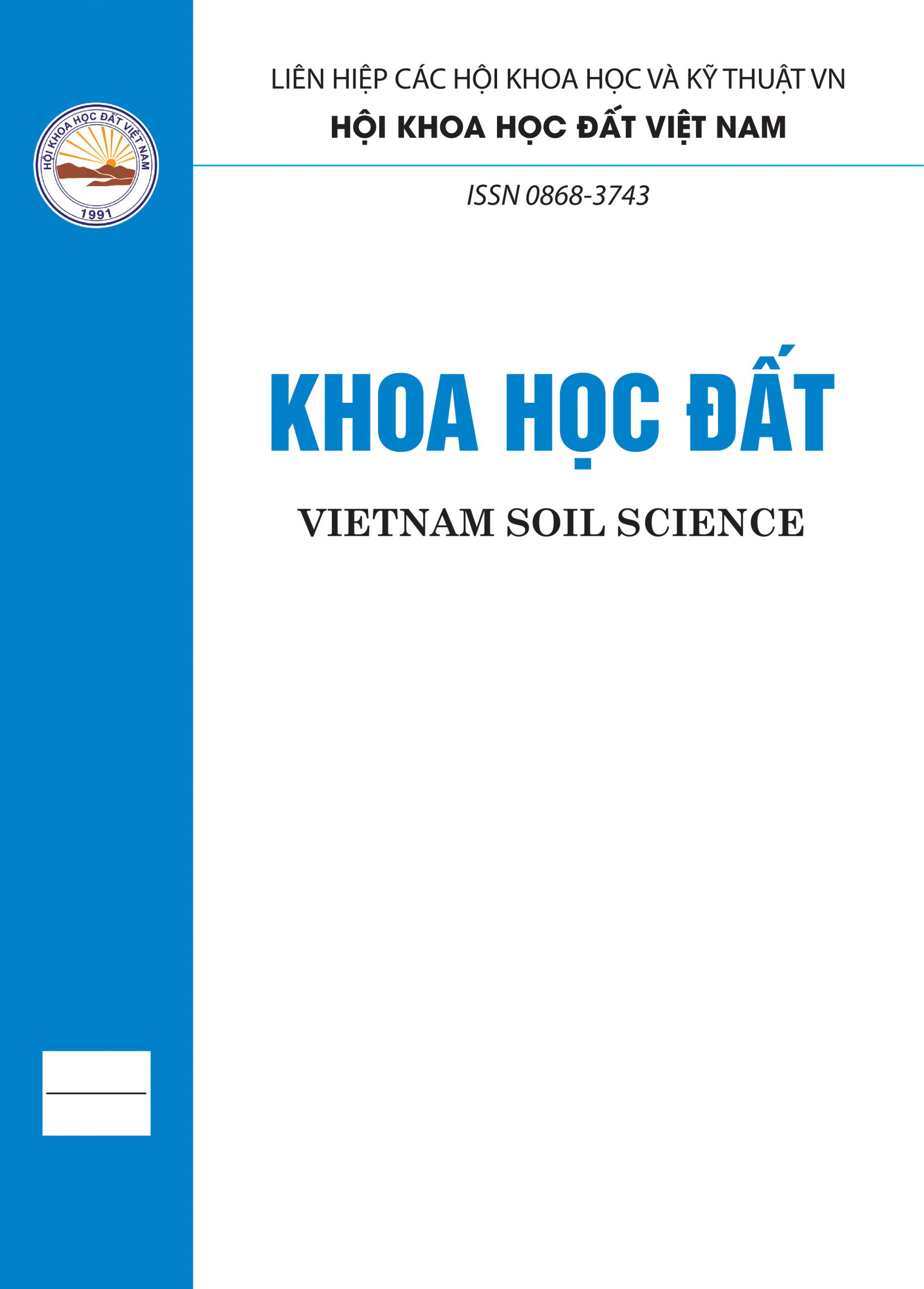THỰC TRẠNG VÀ GIẢI PHÁP QUẢN LÝ VÀ SỬ DỤNG ĐẤT NÔNG NGHIỆP VIỆT NAM GIAI ĐOẠN 2021 – 2030
Nguyễn Đình Bồng1
[1] Hội Khoa học Đất Việt NamTÓM TẮT
Đất là tư liệu sản xuất không thể thay thế và là một trong ba yếu tố đầu vào (đất đai, lao động và vốn) của sản xuất nông nghiệp; Quản lý, sử dụng đất nông nghiệp hiệu quả bền vững là mục tiêu hướng tới nền sản xuất nông nghiệp hàng hóa tập trung, quy mô lớn hiệu quả. Chính sách pháp luật đất đai, trách nhiệm quản lý Nhà nước và việc tổ chức thực hiện có vai trò quan trọng trong quá trình phát triển nông nghiệp, nông thôn và cải thiện đời sống nông dân. Thực trạng quản lý sử dụng đất nông nghiệp ở Việt Nam giai đoạn 2011 – 2020 cho thấy: 90% đất sản xuất nông nghiệp do hộ gia đình cá nhân quản lý sử dụng với phương thức sản xuất phân tán quy mô nhỏ, hiệu quả thấp còn phổ biến, bình quân đất nông nghiệp 1,6168 ha/hộ nông thôn, 2,9948 ha/hộ nông nghiệp; đất sản xuất nông nghiệp 0,6770 ha/hộ nông thôn, 1,2541 ha/hộ nông nghiệp; Các tổ chức kinh tế chỉ quản lý sử dụng 10% đất sản xuất nông nghiệp, quy mô sản xuất còn nhỏ. Chuyển dịch cơ cấu lao động trong khu vực nông thôn chưa đồng bộ với chuyển dịch cơ cấu kinh tế theo hướng công nghiệp, dịch vụ; lao động nông nghiệp chiếm 33,06% tổng số lao động cả nước và 49,10% tổng số lao động nông thôn. Những hạn chế trên là rào cản đối với sản xuất nông nghiệp hàng hóa tập trung quy mô lớn, hiệu quả trong giai đoạn hiện nay. Nghị quyết Hội nghị Trung ương 18 (Khóa XIII) đã xác định quan điểm, nhiệm vụ giải pháp hoàn thiện thể chế, chính sách đất đai trong thời kỳ mới, trong đó có nhiều nội dung mới về quản lý sử dụng đất nông nghiệp. Chính phủ đang tiến hành tổng kết thi hành Luật Đất đai 2013 và xây dựng Luật Đất đai (sửa đổi) trình Quốc hội ban hành nhằm đáp ứng yêu cầu phát triển kinh tế xã hội giai đoạn 2021 – 2030 với mục tiêu đưa Việt Nam trở thành nước đang phát triển có thu nhập cao vào năm 2030. Các giải pháp tăng cường hiệu quả quản lý sử dụng đất nông nghiệp giai đoạn 2021 – 2030: 1) Hoàn thiện chính sách pháp luật đất đai, 2) Đẩy mạnh thực hiện quy hoạch sử dụng đất; 3) Tăng cường công tác điều tra, đánh giá đất đai, 4) Thức đẩy thị trường quyền sử dụng đất nông nghiệp; 5) Tăng cường đầu tư, ứng dụng Công nghệ Nông nghiệp 4.0 trong sản xuất nông nghiệp, nâng cao hiệu quả sử dụng đất nông nghiệp, bảo vệ cải tạo đất, thích ứng với biến đổi khí hậu.
Từ khóa: Quản lý, sử dụng đất nông nghiệp, thực trạng, giải pháp.
SUMMARY
Current situation and solutions for agricultural land use and management
in Vietnam in the period of 2021 – 2030
Nguyen Dinh Bong1
1 Vietnam Society of Soil Siencet
Land is an irreplaceable means of production and one of the three inputs (land, labor and capital) of agricultural production; Sustainable and efficient management and use of agricultural land is the goal towards efficient large-scale and concentrated commodity agricultural production. Land policy and law, State management responsibilities and organization play an important role in the process of agricultural and rural development and improvement of farmers’ lives. The current situation of agricultural land use management in Vietnam in the period of 2011 – 2020 shows that 90% of agricultural land is managed and used by individual households with small-scale and low efficiency, the average agricultural land area per rural household is 1.6168 ha, per agricultural household is 2.9948 ha. The agricultural production land area per rural household is 0.6770 ha. Per agricultural household is 1.2541 ha. Economic Resolution of the 18th Executive Committee Meeting of the Communist Party of Vietnam Central Committee (Term XIII) organizations, managing and using only 10% of agricultural production land, have a small production scale. Labor restructuring in rural areas has not been synchronized with economic restructuring towards industry and services; agricultural labor accounts for 33.06 of the total number of employees in the country and 49.10% of the total number of rural workers. The above limitations are barriers to large-scale and effective concentrated agricultural production of goods in the current period. has defined views, tasks and solutions to perfect land institutions and policies in the new period, including many new contents on management of agricultural land use. The Government is conducting a review of the implementation of the 2013 Land Law and developing the Land Law (revised) to submit to the National Assembly for promulgation to meet the requirements of socio-economic development in the period of 2021 – 2030 with the goal of bringing Vietnam to the right place. become a developed country with a high income by 2030. Solutions to enhance the efficiency of agricultural land use management in the period of 2021 – 2030: 1) Completing land law policies, 2) Accelerating the implementation of regulations land use plan; 3) strengthen the investigation and assessment of land, 4) Instantly push the market for agricultural land use rights; 5) Increase investment and application of Agriculture Technology 4.0 in agricultural production, improve agricultural land use efficiency, protect and improve land, adapt to climate change.
Keywords: Management and use of agricultural land, situation, solution.
Người phản biện: TS. Mai Hạnh Nguyên
Email: mainguyen_tnmt@yahoo.com.vn
Ngày nhận bài: 10/9/2022
Ngày thông qua phản biện: 10/10/2022
Ngày duyệt đăng: 15/10/2022
 Tạp chí
Tạp chí




